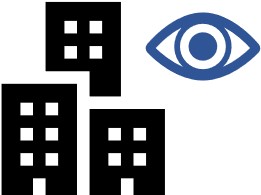
What is CityView?
Two students created a system for urban data visualization titled CityView. CityView provides data visualization for large datasets of spatial-temporal data points.

Two students created a system for urban data visualization titled CityView. CityView provides data visualization for large datasets of spatial-temporal data points.
Spatial-temporal data points can be broken down as follows: spatial referring to an objects position in space (i.e. its longitude and latitude) and temporal referring to an objects position in time (i.e. when was the data point recorded). This functionality results in the ability to create visualizations as static as streetlights in a city to something as dynamic as a fleet of taxi cabs moving throughout a city.
CityView is designed to analyze large sets of urban data. This can be used by an individual doing research or an organization trying to make a decision in an urban environment. The tools provided offer a framework for future experimentation. The core website offers unique visualizations and clear maps in an easy to use and accessible package.
CityView allows users to turn data points into dynamic visualizations. With the tools provided, users are able to visualize one or many data sets on a variety of offered maps. The authors provide unique examples of how these tools can be used through data examples. Follow these examples or draw your own conclusions from the features provided.
The user is able to view up to three datasets concurrently in order to explore a variety of urban data and the interaction between each dataset. View the visualization at large to make general conclusions or zoom in to answer questions about specific neighborhoods.
The user is able to view time series data in order to explore how data points travel through a city. View the visualization as individual sets, layered pairs, or as a timed loop of the datasets.
The user is able to view a dataset spanning over space and time. The visualization displays two unique data types within the dataset in their spatial location over time helping the user to explore its living relationship with the city.
CityView exists as a simple client-side website. Its lightweight design consists entirely of HTML, CSS, and JavaScript files. Because it is so versatile, it works across all platforms - desktop, tablet, and smartphones - and across all operating systems. There are no databases to maintain, no servers to synchronize, and no heavy loads to bear.
CityView utilizes the API from Mapbox, Leaflet, and Carto: